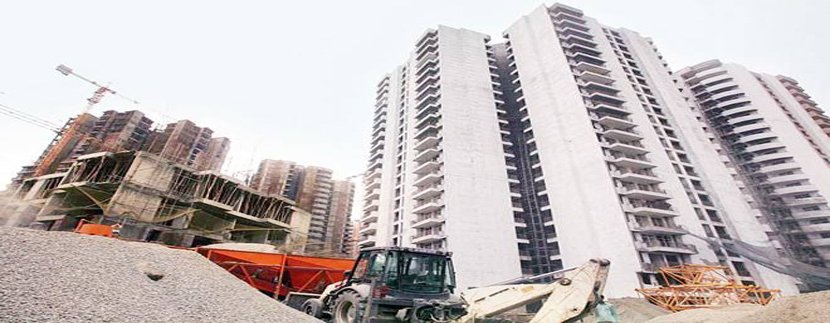GST impact: How real estate fares against mother of all tax reforms

The Goods and Services Tax (GST) has finally become a reality, nearly one-and-a-half decades after it was first mooted. The journey towards a single tax system has not been particularly smooth as the GST has faced innumerable challenges due to issues regarding its structure, tax brackets and subventions for states that may face revenue losses. But in spite of the challenges and resistance, the determination of the government to implement GST showed the result, and it finally came into force on July 1.
What is GST?
GST is one indirect tax for the whole nation, which will make India one unified common market. GST is a single tax on the supply of goods and services, right from the manufacturer to the consumer. Credits of input taxes paid at each stage will be available in the subsequent stage of value addition, which essentially makes GST a tax only levied on the value addition at each stage.
GST is a destination-based tax and will incorporate the various indirect taxes currently levied by the central and state governments, including excise duty, service tax and value-added tax (VAT). There will be two components of GST – the Central GST (CGST) and the State GST (SGST). Both central and state governments will simultaneously levy GST across the value chain, on every supply of goods and services. The central government will levy and collect CGST while state governments will levy and collect SGST on all transactions within the state.
More than 160 nations have already adopted a unified indirect tax structure. In Asia, countries such as Indonesia, Thailand, Singapore, and the Philippines adopted a GST during the 1980’s and 1990’s, creating an effective tax system, with the comparatively lower administration and collection costs. It has enabled countries such as Singapore to lower its corporate and personal income taxes, which in turn has encouraged more foreign direct investment (FDI) and stimulated the overall economic growth in the country.

How is real estate covered under GST?
- The GST Council has categorised renting of immovable property (including a commercial, industrial or residential complex for business or commerce, either wholly or partly) as supply of service.It has also included construction of a complex, building, civil structure or a part thereof, including a complex or building intended for sale to a buyer, wholly or partly, as a supply of service.
- The act has identified lease of land and building, any lease, tenancy, easement and licence to occupy land as a supply of service.
- However, sale of land and completed buildings will be out of the purview of GST.
- Similarly, input tax credit has not been allowed for works contract services, when supplied for construction of immovable property or when goods or services or both are received for construction of an immovable property.
Clarity is now awaited on the abatement for the cost of land (currently 70 per cent, subject to conditions), which is applicable for calculating service tax on investments in residential projects, which are under construction.
How GST will impact real estate?
The cascading effects of the current tax regime have added to the high cost of real estate in the country. The removal of various federal tax barriers and creation of a common market will improve the supply chain efficiency of the real estate sector as well. In the long run, GST is likely to be positive for the real estate sector, with the warehousing segment set to be the biggest beneficiary of the reform. It is expected to ensure that doing business in India becomes tax neutral, irrespective of the location. The investment decisions of warehousing operators will no longer be governed by the comparative tax advantages of various states, thereby enabling them to take informed decisions based on supply chain dynamics. As the warehousing sector moves towards a more systematic mode of operation, the sector is likely to witness the inflow of more institutional funding and formal sources of capital.
A vast majority of construction materials are placed in the 28 per cent tax slab (slightly higher than the current tax rates); hence, the cost of internal fittings such as ceramic articles, tiles and granites, among others, may go up marginally. Buyers, therefore, can expect a higher price across mid-end/high-end and premium/luxury segments except for residential projects launched under the Pradhan Mantri Awas Yojna (PMAY), which has been exempt from GST (was exempt from service tax previously). While there might be a mixed impact on the ancillary industries that support construction activity, the removal of various federal tax barriers and creation of a common market will certainly improve supply chain efficiency, reducing the costs and delivery time of goods.
The GST Council has allowed input tax credit (ITC) on the raw materials and services used for construction activity; hence, ITC will play a critical role in determining the final cost implications of GST on the real estate sector. Going forward, real estate players will be able to get ITC against their payment of taxes on inputs used during construction. It will also encourage increased tax compliance and reduce dependence on cash as the ITC can only be availed if raw materials are sourced from GST-registered vendors. GST also features an anti-profiteering provision, which would make it mandatory to pass on the benefits of ITC to end users – a move likely to be positive for reducing project costs.
All in all, GST will bring in a transparent and corruption-free tax administration, removing the current deficiencies of the supply chain owing to multi-layered policies. It is a positive step for the nation, to enhance its economy’s flexibility and achieve higher growth. With the scale of the real estate sector, it can drive economic growth across major business segments.
source : Businesstoday


